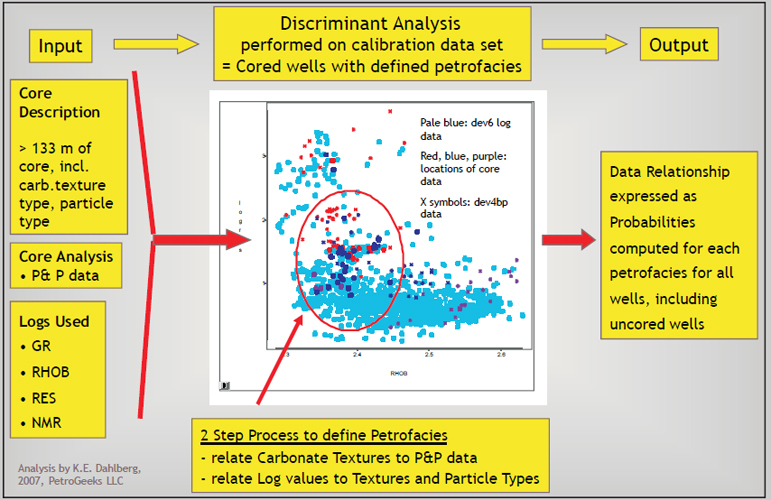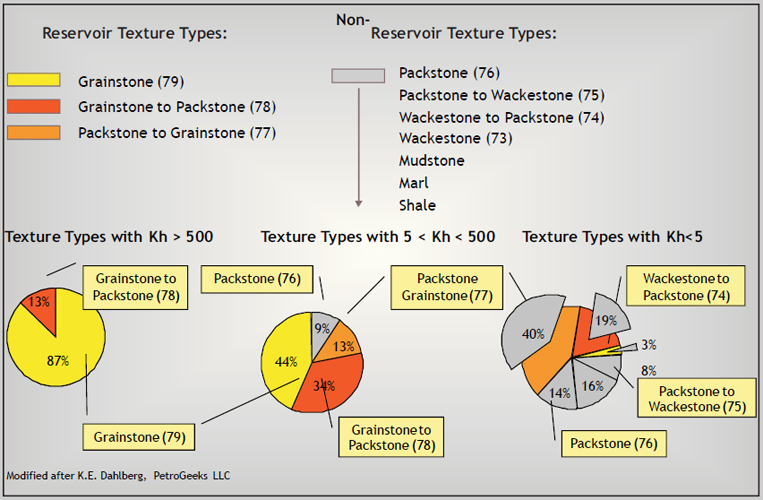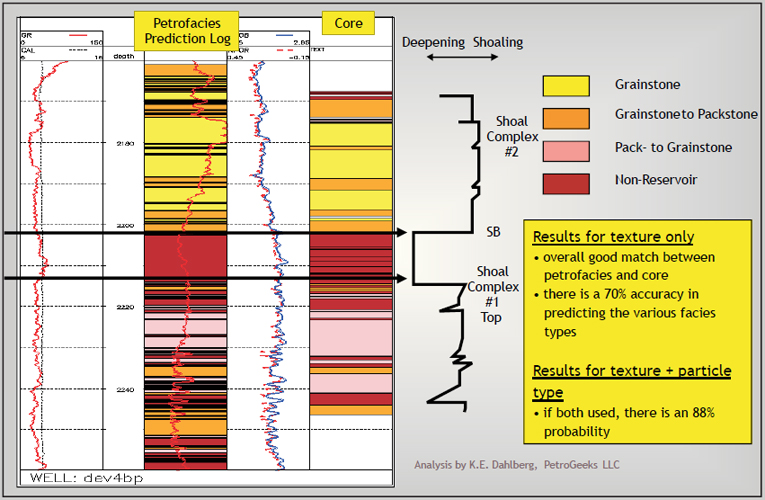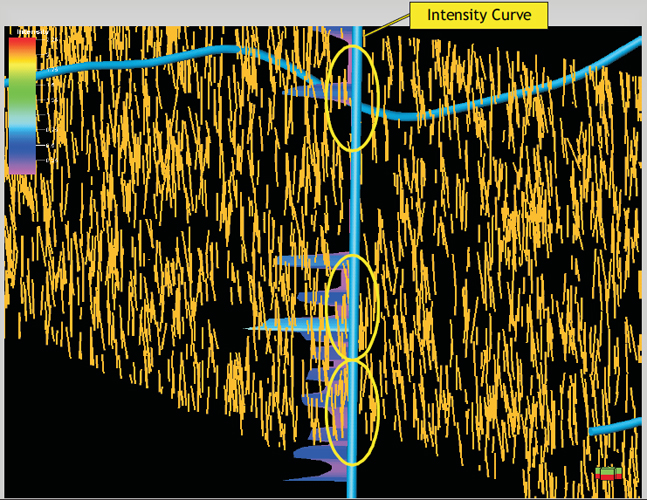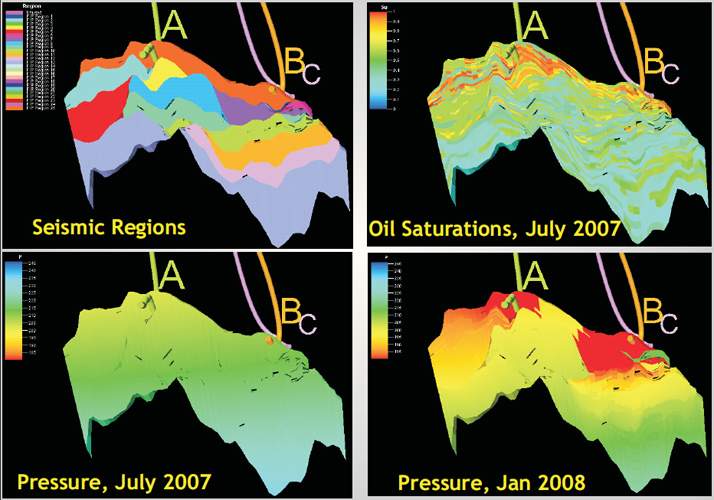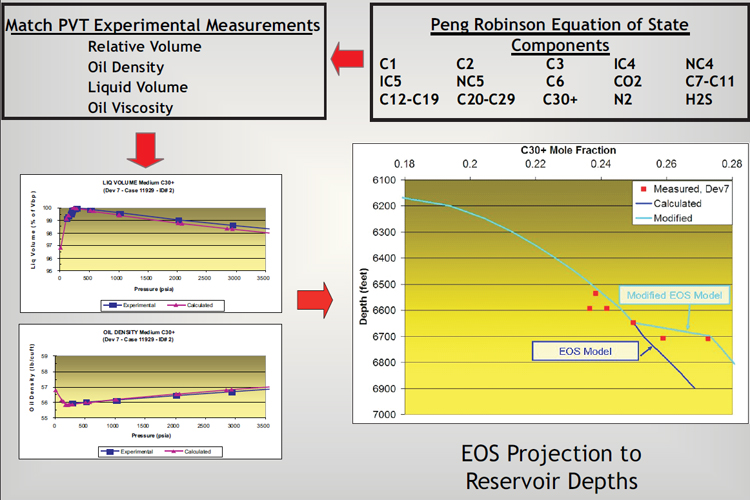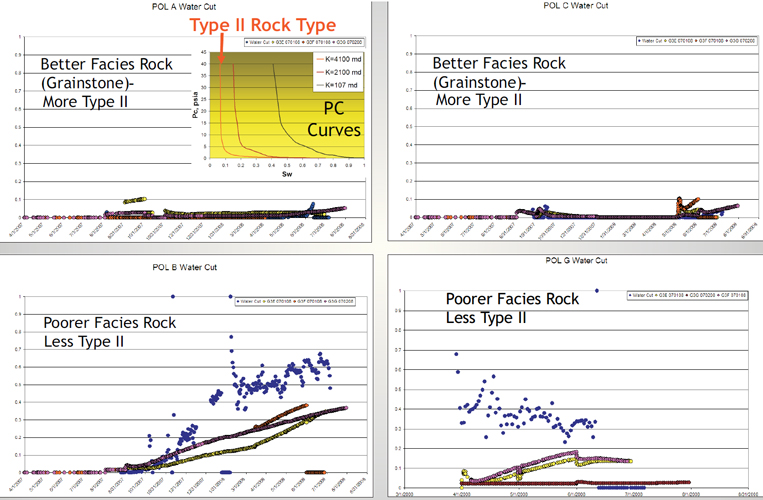 Click to view poster in PDF format.
Click to view poster in PDF format.
PSDevelopment Challenges in a Fracture-Enhanced Carbonate Grainstone Reservoir, Polvo Field, Brazil - from Reservoir Characterization to Dynamic Model*
Peter Schwans1, T.C. Lukas2, Michael Gross2, Marty Cohen2, D. Scott Bird1, Francois Hindlet1, and Kim Zauderer1
Search and Discovery Article #20079 (2009)
Posted October 15, 2009
*Adapted from poster presentation at AAPG Annual Convention, Denver, Colorado , June 7-10, 2009. See companion article, “Application of Mechanical Stratigraphy to the Development of a Fracture-Enhanced Reservoir Model, Polvo Field, Campos Basin, Brazil”, Search and Discovery Article #20080 (2009).
1 International Exploitation, Devon Energy, Houston, TX ([email protected]).
2 Consultant – Lukas, Houston, TX ([email protected]); Gross– Department of Earth Science, Florida International University, Miami, FL ([email protected]).
A combined fracture and matrix static and dynamic model was built for carbonate shoal sequences of Polvo Field, offshore Campos Basin, Brazil. The Albian-age carbonates of the Quissama Member (Macaé Formation) were deposited in shallow marine to intertidal, shoaling-upward sequences on a partially emergent shelf. Shoal complexes are retrogradationally stacked, probably in response to onset of drowning of the shelf in the Late Albian. They are unconformably overlain by the transgressive shales and marls of the Outeiro Member. Individual shoal sequences comprise burrowed subtidal packstones grading upward to oncolitic-oolitic grainstones often capped by hardgrounds. The carbonate sequences are often only partially preserved and stack vertically and offlap laterally in complex fashion to form three shoal complexes. Reservoir heterogeneity occurs at the facies and sequence-stratigraphic level; later diagenesis and subsequent fracturing and faulting added additional complexity.
A matrix and a mechanical stratigraphy model with discrete fracture networks were built to model the dual porosity-permeability systems. In the matrix model oil saturated grainstones of the younger shoal complexes form a high permeability veneer overlying older and cemented shoal complexes with patchy matrix permeability; the latter exhibit abundant fracturing, however. Detailed core descriptions were linked to logs to define probability petrofacies and associated permeability distributions. The fracture systems are identified in cores and via FMI logs. Their distribution and character was used to define a mechanical stratigraphy and associated DFN’s. Together with seismically mapped faults, the fractures play a significant role in maintaining reservoir energy and vertical connectivity in this highly compartmentalized system where neighboring wells do not communicate. Instead, wells exhibit a high amount of reservoir energy that exceeds the amount accounted for by the mapped hydrocarbon and aquifer zones.
|
|
Location and Stratigraphic Framework
Depositional Environment and Paleogeography
Matrix Model Input
Carbonate Matrix Model Workflow Observation in the field are:
This indicates that:
Fracture Model Workflow
de Graciansky, P.C., J. Hardenbol, T. Jaquin, and P.R. Vail, eds., 1998, Mesozoic and Cenozoic Sequence Stratigraphy of European Basins: SEPM Special Publication Series no. 60, 786 p. Guardado, L.R., L.A.P. Gamboa, and C.F. Lucchesi, 1989, Petroleum geology of the Campos Basin, a model for a producing Atlantic type basin, in J.D. Edwards and P.A. Santogrossi, eds., Divergent/Passive Margins: AAPG Memoir, v. 48, p. 3-80. Lucia, F.J., 2007, Carbonate Reservoir Characterization An Integrated Approach (2nd edition): Springer-Verlag, Berlin Heidelberg, 366p. Rangel, H.D., and A.Z.N. de Barros, 1993b, Estrati-grafia e evolu-e-strutural da rea Sul (adjacente ao Alto de Cabo Frio) da bacia de Campos: Annals of the 3rd Southeastern Geological Symposium, Rio de Janeiro, Brasil, p. 57-63. Rangel, H.D., A.L. Soldan, C.E. da S. Pontes, R.S. de Souza, L.M. Arienti, R.P. Bedregal, A.Bender, N.C. Azambuja, J.C. Ferreira, and R. Jahnert, 1993a, Habitat do petrleo da Por de gua Rasa na Regi Central da Bacia de Campos, Petrobras/Depex/Cenpes: Internal Report, 58 p. Vail, P.R., 1987, Seismic stratigraphy interpretation using sequence stratigraphy: Part 1: Seismic stratigraphy interpretation procedure, in A.W. Bally (ed.) Atlas of Seismic Stratigraphy: AAPG Studies in Geology 27, p. 1-10. Vail, P.R., R.M. Mitchum, Jr., R.G. Todd, J.M. Widmier, S. Thompson, III, J.B. Sangree, J.N. Bubb, and W.G. Hatlelid, 1987, Seismic stratigraphy and global changes of sea level, in C.E. Payton, ed., Seismic Stratigraphy - Applications to Hydrocarbon Exploration: AAPG Memoir 26, p. 49-212.
Copyright © AAPG. Serial rights given by author. For all other rights contact author directly. |






